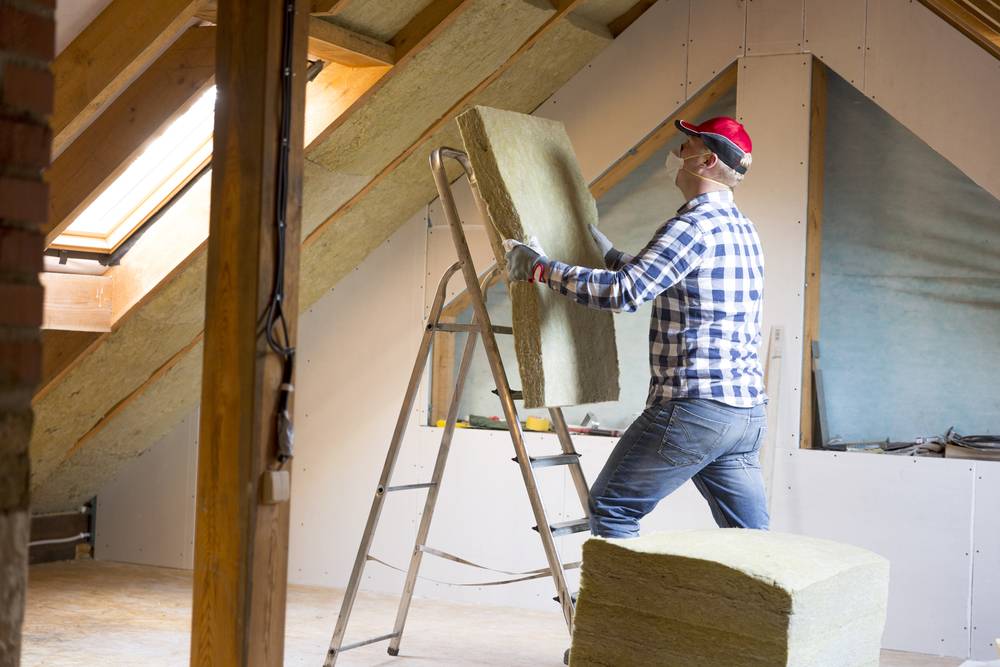Unlike your high school science teacher, I will try my best to keep you all engaged in this quick lesson.
It has been determined, and I am sure you all remember this: Energy cannot be created or destroyed but it can change phases, such as a gas to a liquid, and be transferred from one mass to another. This is also known as the Law of Conservation of Energy (if you want to get fancy).
Heat is a form of energy, also known as thermal energy. Thermal energy, put simply, is part of the total potential energy of an object, or a mass, that results in overall temperature. As masses change phases heat is either acquired or lost by the system as a whole.
In regards to temperature heat wants to flow from one object, or mass, to another in order for temperature to be stabilized. For example, we all know that when you fill your tub with hot and cold water it will be lukewarm, it will not just be hot or cold. The water reaches a uniform temperature due to conduction.
What is conduction?
Good thing I have done my research because I was definitely not paying attention during any of my science classes.
Conduction is the most familiar method of heat transfer. Heat is always transferred from one warmer mass to the colder mass when conduction is involved. Uniform temperature is always desired.
In regards to your HVAC system proper insulation of your home will ensure that a certain desired temperature is maintained while heat is neither lost or gained. When heat is lost or gained your system is using more energy than it should be in order to make sure that you are comfortable in your own home.
How Does Insulation Work?
Now that we all know that heat flows from warmer to cooler temperatures until there is no longer a difference in temperature, it is time to talk about heat transfer in regards to your heating and/or air conditioning system.
In the winter your HVAC system works to provide you with heat. The heat maintained within your home wants to go outside so that there is no temperature difference. The heat your home looses in the winter is gained by the heating system. In the summer the heat from the outside wants to make its way into your cool home. The heat gained from the outside is removed from you home by your air conditioning system. Your HVAC system works in order to make sure that you are comfortable but heat will always be obnoxious and want to kill your vibe.
Insulation provides resistance to the flow of heat. It is important to your home in order to make sure that energy is not being wasted by your HVAC system. The bulky light weight materials that make up insulation not only allow your HVAC system to function more efficiently but insulation also provides you with a more comfortable environment by controlling the amount of heat that is lost and/or gained by your home.
What Should Be Insulated?
•Attic
We all know that heat rises. In regards to your home heat will make it’s way up to your attic wanting to get outside so that “temperatures can be unified”. The attic is known as the greatest heat loser in the home. By insulating your attic you will prevent cool air and heat from escaping your home. If you attic is unfinished and mostly used for storage you should insulate the attic floor so that warm and/or cool air is trapped below the stairs. If you attic is finished you should insulate the ceiling. Before you insulate make sure that all air leaks are sealed and you should also check on the condition of your roof.
•Ducts
All HVAC systems make sure you receive the cool or warm air when needed. It is supplied to your home through a duct system. This duct system should be insulated in order to make sure that no warm air is lost and no warm air is gained. By insulating your duct system you will be making sure that energy being wasted.
• Cathedral Ceilings
Since heat rises if you have Cathedral ceilings in your home chances are the heat is going to stay up there as well, wanting and hoping to get out. By insulating your Cathedral ceilings temperatures will more likely remain close to the house temperature creating even temperature distribution.
•Exterior Walls
The walls in your home represent a far more exterior surface area than your floors or ceilings. Because of this the walls in your home present more opportunity for heat to be gained or lost. By making sure you insulate the walls of your home you are making a point to hide from the cold of the winter and the neat of the summer. When it comes to wall insulation make sure you consider the many insulating options and find the right insulation for your home and your pockets.
•Basement
Whether or not your basement is finished, in the process of being finished, or will never get finished it is important to make sure that it is insulated as well. An insulated basement can save you money on your energy bill while also providing a dry comfortable space. The exterior walls in your basement should be insulated. Even though you may not use your basement as much it is still connected to your home and the other living spaces in which cool or warm air is provided to. For example, I remember my basement always being so cold. If your basement is not insulated the cool air that is being blown into your home could make its way down to your basement. From there the heat from the outside will then make its way inside. Once it makes its way inside in hopes to create even temperature it will make its way to the rest of your home. Insulating your basement reduces heat loss through the foundation of your home while also protecting the space against moisture and condensation on surfaces. By doing so it eliminated any chance of infestations of bugs as well.
• Crawl Space
Believe it or not it is very important to make sure your crawl space is insulated. One can insulate the floor above the crawl space or the foundation walls of the crawl space. Crawl spaces are notorious for moisture problems and by making sure that the space is insulated will prevent moisture from the ground rising into the crawl space and potentially the rest of your home. When moisture is involved certain bugs like to come out and play and call your home, theirs. By insulating the crawl space you will also be less likely to have any infestations.
There are many types of insulation but I will be focusing n the 2 most common types that are used for the insulation of homes.
1.Blanket Insulation (AKA Batt and/or Rolled Insulation) – This type of insulation is widely available and is the most common type of insulation to be used when insulating homes. Blanket insulation is made up of flexible fibers along with other minerals, such as wool and cotton. Most manufacturers attach a vinyl facing to act as an air barrier. This type of insulation is available in widths that are suited to fit the space between the wall studs. You can also cut and trim the insulation in order to fit certain areas. This type of insulation is best for insulating any area of your home. Blanket insulation is inexpensive and can be done with out the help of a professional, as long as you are willing to do the work.
2. Loose Fill/ Blown-in-Insulation – This type of insulation is actually blown-in to the area that needs to be insulated. Being made up of small fibers of recycled waste materials, the foam particles conform to any space with disturbing structures or piping. Although it is a little bit more expensive than blanket insulation, it is worth the small investment.
Insulation Tips:
• Always ask for an opinion from a professional in regards to which insulation will be perfect for your home
• Take into consideration: climate, home design and budget when picking out insulation
• Use higher R-valued insulation on exterior walls and cathedral ceilings; this will result in more insulation with less thickness
• Follow all manufacturers installation instructions and wear proper gear when installing insulation
• Do some research and get different opinions from others who own homes
• You can also combine different types of insulation
• There are all different kinds of brands and types of insulation; make sure it fits into your budget while giving your home proper insulation

